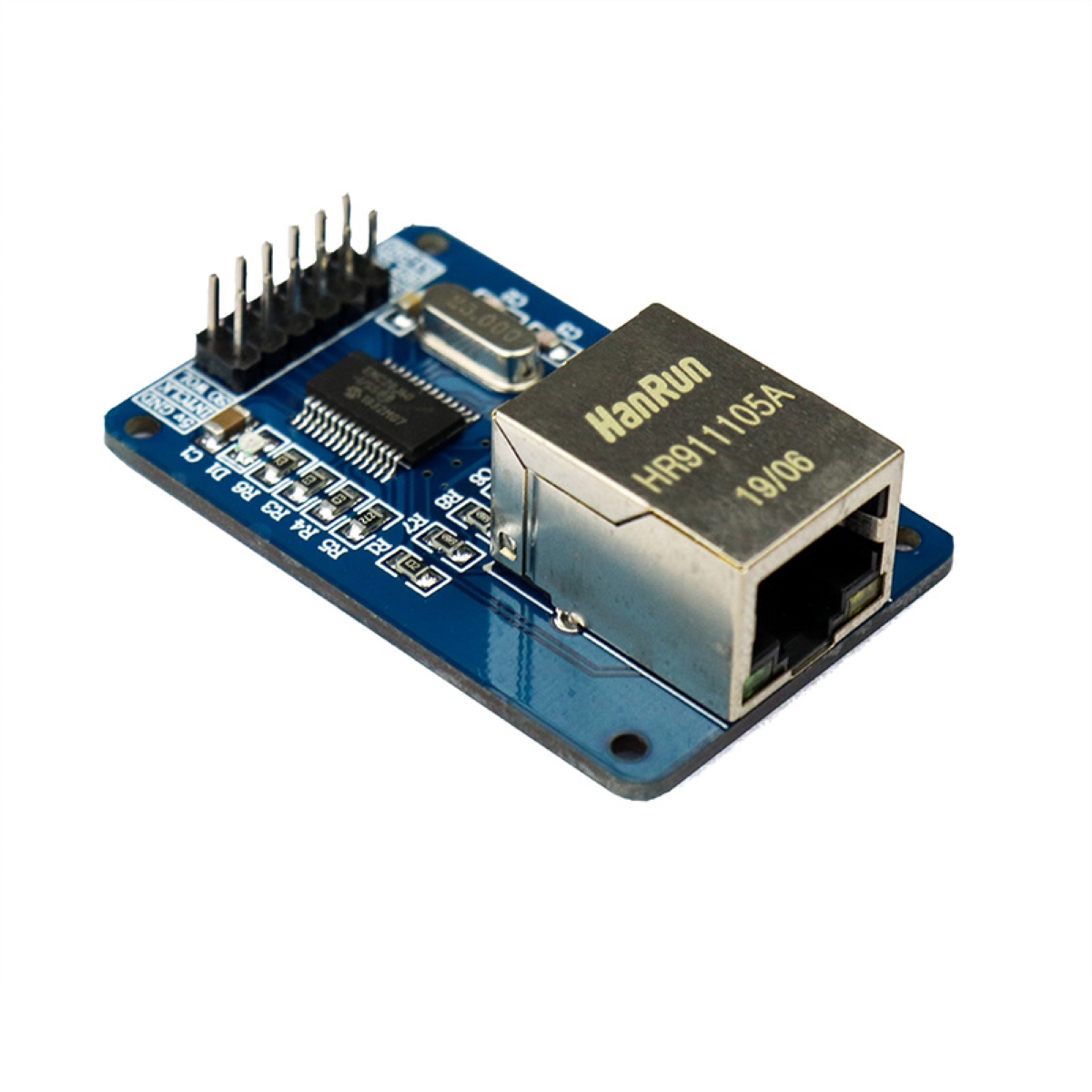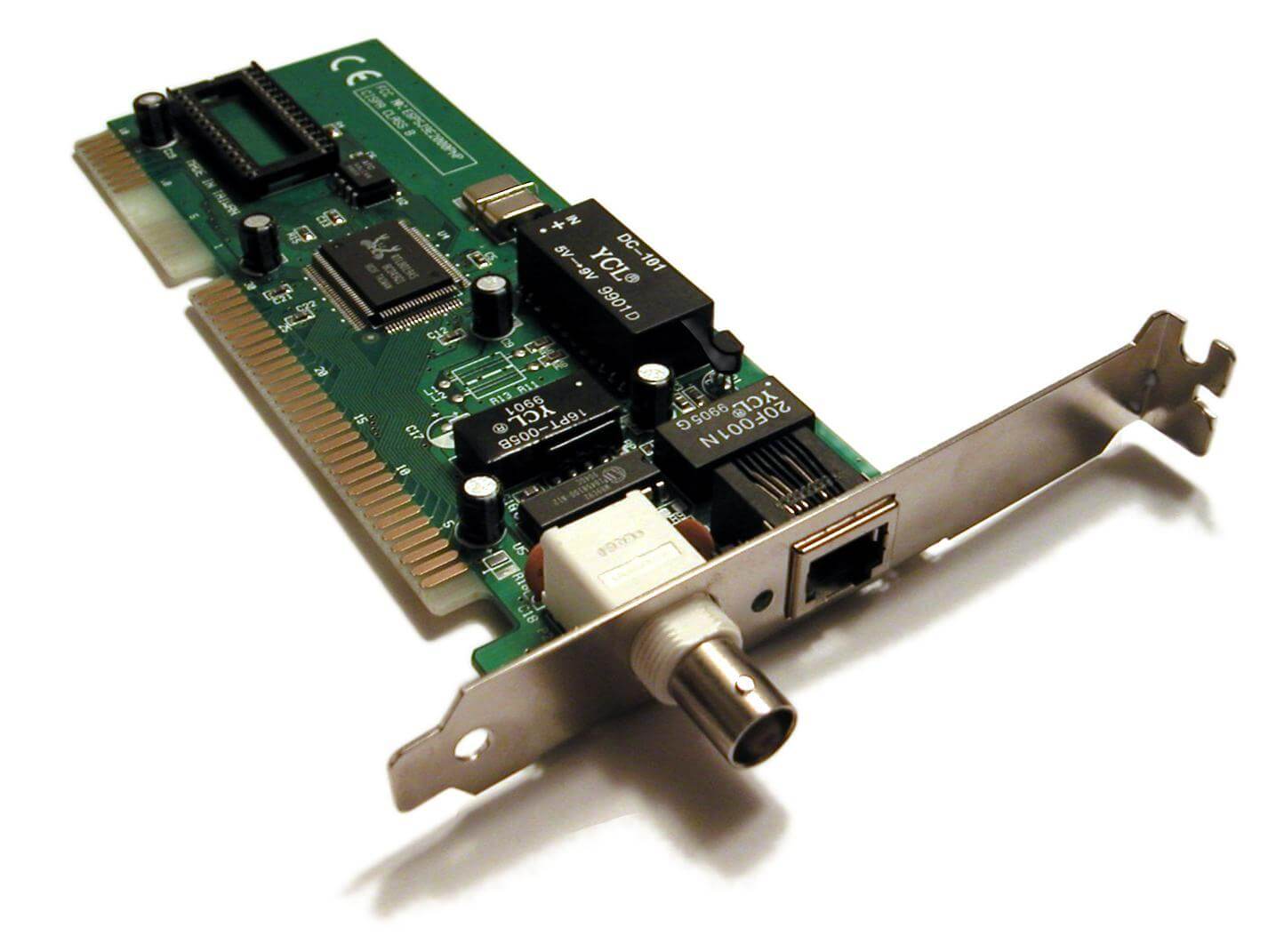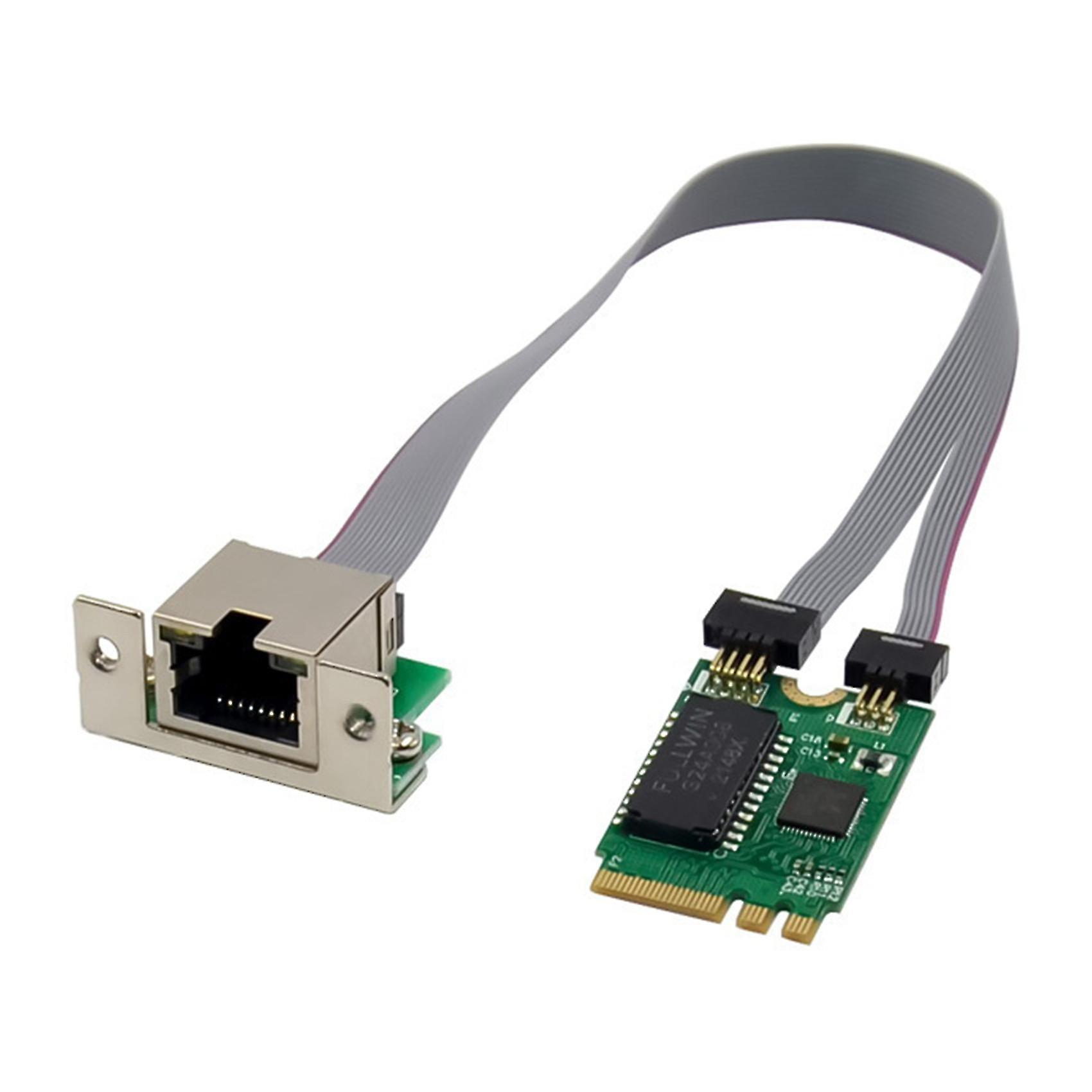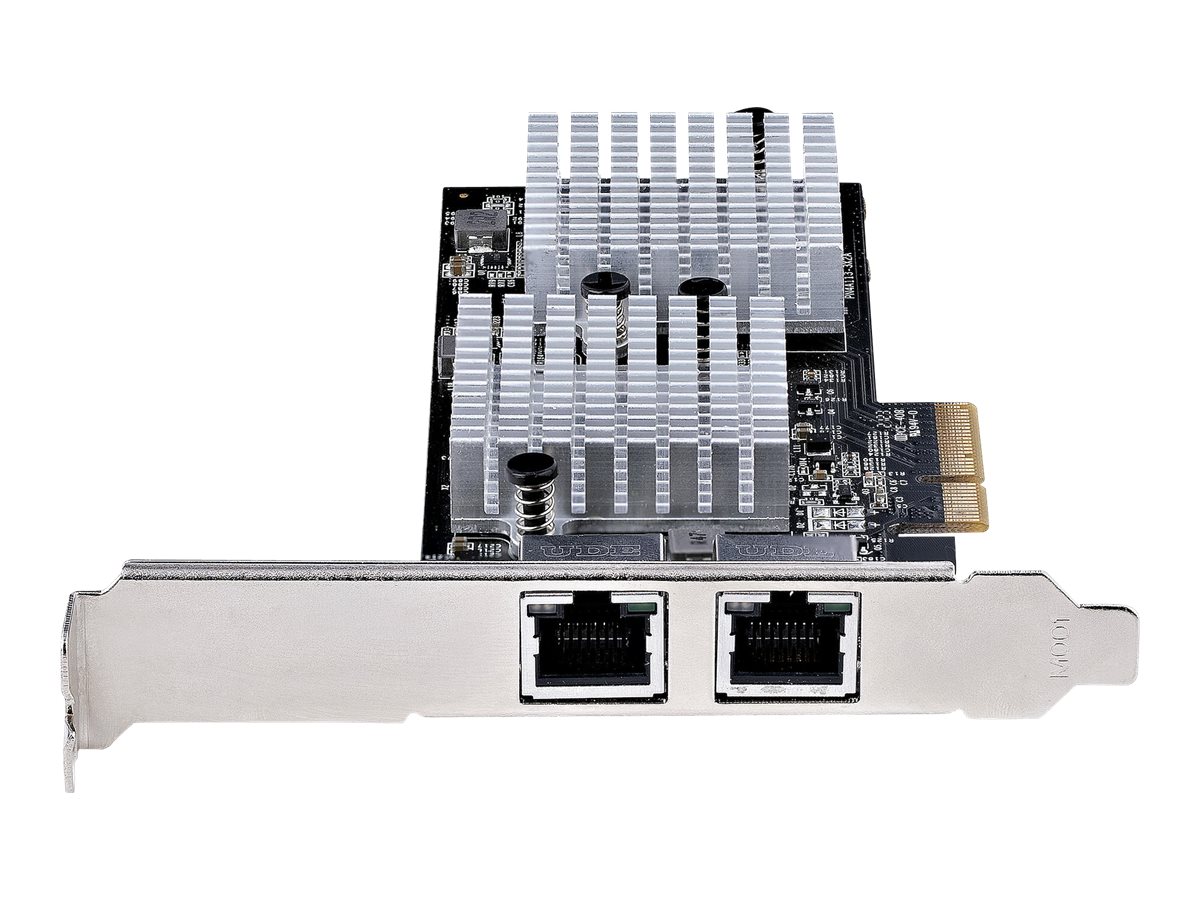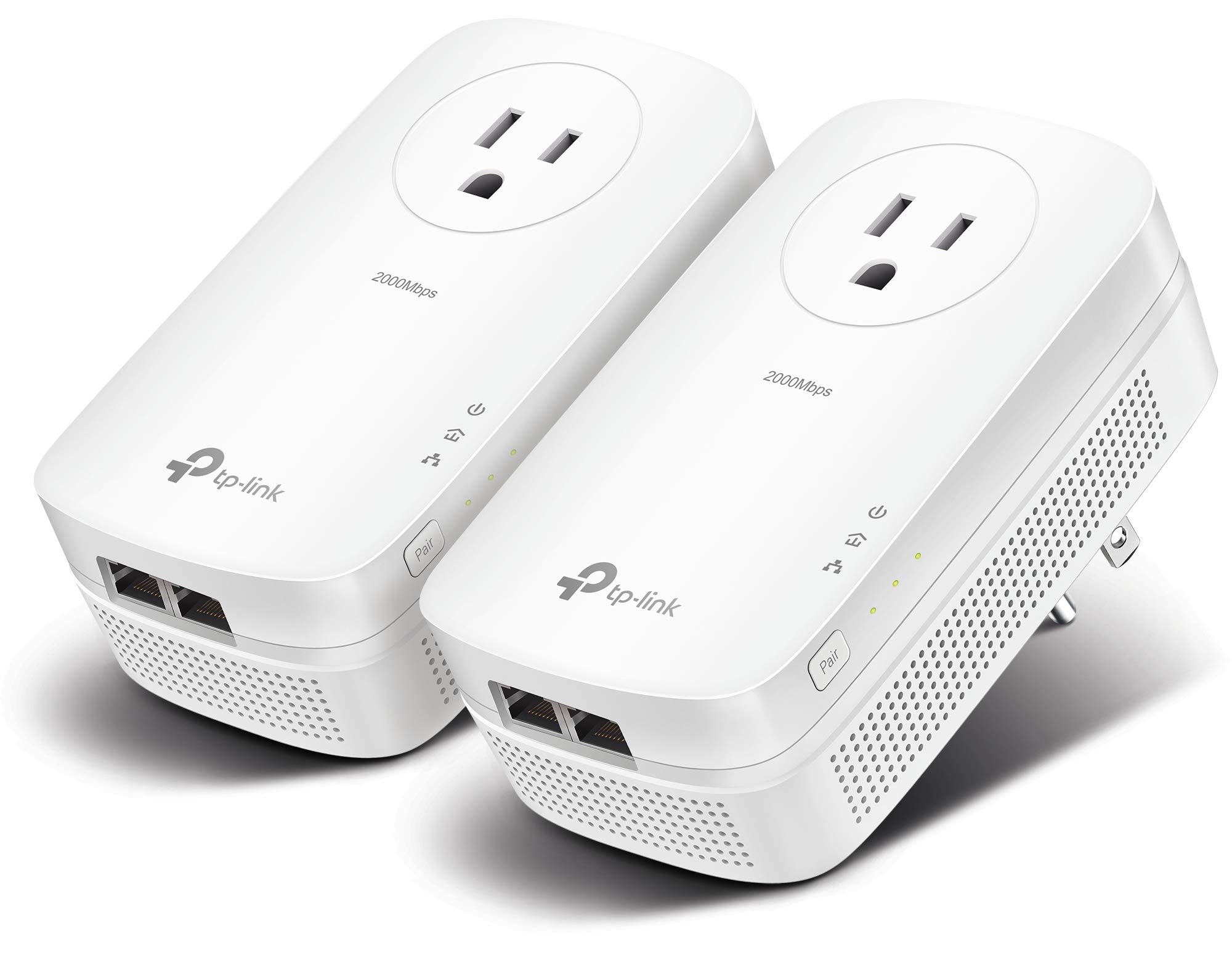Introduction
Welcome to the world of Ethernet PHY! In today’s digital age, Ethernet has become the de facto standard for networking infrastructure, providing high-speed connectivity for devices and systems. Ethernet PHY, short for Physical Layer, is an essential component of Ethernet technology that enables the transmission and reception of data signals over network cables.
As the name suggests, Ethernet PHY operates at the physical layer of the Ethernet protocol stack, responsible for the conversion of digital data into analog signals for transmission over various physical media such as copper or fiber optic cables. This conversion is necessary to ensure reliable and efficient communication between devices connected to an Ethernet network.
Ethernet PHY is a vital link in the Ethernet ecosystem, bridging the gap between the digital world and the physical medium. It ensures that data signals are accurately transmitted, received, and decoded, facilitating smooth and error-free communication between network devices.
In this article, we will delve deeper into the world of Ethernet PHY, exploring its functionality, types, benefits, and limitations. We will also compare Ethernet PHY with Ethernet MAC (Media Access Control) to highlight their distinct roles in the Ethernet protocol stack.
Whether you’re a networking enthusiast, a student studying computer science, or a professional working in the networking field, understanding Ethernet PHY will provide you with valuable insights into the fundamental workings of Ethernet networks.
So, grab a coffee, sit back, and let’s embark on a journey to unravel the mysteries of Ethernet PHY!
What Is Ethernet PHY?
Ethernet PHY, or Physical Layer, is a crucial component of the Ethernet networking technology. It serves as the interface between the higher-level network protocols and the physical medium through which data is transmitted. The Ethernet PHY is responsible for converting the digital data generated by the Ethernet MAC into analog signals suitable for transmission over various physical media, such as copper or fiber optic cables.
The Ethernet PHY performs a range of functions to ensure reliable and efficient data transmission. It encodes the digital data into a specific format, modulates the signals onto the physical medium, and provides mechanisms to detect and correct transmission errors. Additionally, Ethernet PHY also handles auto-negotiation, enabling devices to establish the most optimal communication parameters, such as speed and duplex mode, for the network link.
One of the key features of Ethernet PHY is its ability to support different speeds and media types. It can operate at various data rates, such as 10 Mbps, 100 Mbps, and even Gigabit Ethernet speeds of 1 Gbps or higher. Furthermore, Ethernet PHY can be designed to work with different physical media, including twisted-pair cables, coaxial cables, or fiber optic cables.
Ethernet PHY can be integrated into network interface cards (NICs), switches, routers, and other network devices, enabling them to establish connections and communicate over Ethernet networks. It is a critical component in ensuring reliable and efficient data transmission, allowing for seamless communication between devices in a network.
With the constant advancements in networking technology, Ethernet PHY continues to evolve to support higher speeds and improve performance. Newer standards, such as 10 Gigabit Ethernet and beyond, have emerged to meet the ever-increasing demands for faster and more reliable data transmission.
Overall, Ethernet PHY plays a vital role in the Ethernet ecosystem, enabling the smooth and reliable exchange of data between network devices. It is through the careful design and implementation of Ethernet PHY that Ethernet networks have become the backbone of modern communication systems.
How Does Ethernet PHY Work?
Ethernet PHY, or Physical Layer, works by converting digital data from the Ethernet MAC (Media Access Control) into analog signals that can be transmitted over various physical media. It performs a series of operations to ensure reliable data transmission and reception between network devices. Let’s dive into the inner workings of Ethernet PHY!
The first step in the Ethernet PHY’s operation is encoding. It takes the digital data provided by the Ethernet MAC and processes it using encoding techniques such as Manchester coding or 4B/5B encoding. This encoding ensures that the digital information can be effectively transmitted over the physical medium and be accurately detected by the receiving device.
Once the data is encoded, the Ethernet PHY converts it into an analog signal suitable for transmission over the selected physical medium. This process is known as modulation, where the digital signals are transformed into continuous waveforms that can be transmitted using the appropriate modulation scheme.
During transmission, the Ethernet PHY also adds additional control information to the data signals. This includes frame synchronization (preamble), destination/source address, error detection (CRC), and other relevant control bits. These control bits help in accurate data reception and error detection at the receiving end.
On the receiving side, the Ethernet PHY receives the analog signal from the physical medium and processes it to extract the encoded digital information. It performs demodulation to convert the received analog signal back into digital data. Then, it decodes the digital data to recover the original Ethernet frames transmitted by the sending device.
The Ethernet PHY also performs error detection and correction during the reception process. It compares the received data with the error detection bits embedded in the Ethernet frames to check for any transmission errors. If errors are detected, the Ethernet PHY can initiate retransmission requests or perform error correction mechanisms, depending on the specific Ethernet standard and protocols in use.
Furthermore, the Ethernet PHY is responsible for auto-negotiation, a process that allows two connected devices to determine and establish the most optimal communication parameters, such as speed and duplex mode. This ensures that the devices can communicate efficiently and at the highest possible speed supported by both ends of the link.
Overall, the Ethernet PHY’s operations involve encoding, modulation, frame generation, error detection and correction, and auto-negotiation to facilitate reliable and efficient data transmission between network devices. Its seamless integration with the Ethernet MAC ensures that data can be effectively exchanged over Ethernet networks, forming the backbone of modern communication systems.
Types of Ethernet PHY
Ethernet PHY, or Physical Layer, comes in various types, each designed to support different speeds, physical media, and networking standards. These different types of Ethernet PHY allow for flexible deployment and compatibility with a wide range of Ethernet networks. Let’s explore some common types of Ethernet PHY:
- 10BASE-T PHY: This Ethernet PHY type supports data transfer rates of 10 Mbps and utilizes twisted-pair copper cables for connectivity. It is commonly found in older Ethernet networks and is still used in certain applications where higher speeds are not required.
- 100BASE-TX PHY: This Ethernet PHY type supports data transfer rates of 100 Mbps and also utilizes twisted-pair copper cables. It is widely adopted in Fast Ethernet networks, offering faster transmission speeds compared to 10BASE-T.
- 1000BASE-T PHY: Also known as Gigabit Ethernet PHY, this type supports data transfer rates of 1 Gbps. It uses advanced modulation techniques, such as multi-level signaling, to achieve higher speeds over twisted-pair copper cables.
- 10GBASE-T PHY: This Ethernet PHY type supports data transfer rates of 10 Gbps, providing fast and reliable connections. It uses complex equalization and echo cancellation techniques to overcome the challenges of transmitting high-speed signals over twisted-pair copper cables.
- 1000BASE-SX PHY: This Ethernet PHY type supports data transfer rates of 1 Gbps and utilizes short wavelength multimode fiber optic cables for connectivity. It is commonly used for high-speed connections between devices within a local area network.
- 10GBASE-SR PHY: This Ethernet PHY type supports data transfer rates of 10 Gbps and utilizes long wavelength multimode or single-mode fiber optic cables. It is often used for high-speed connections over longer distances in data centers and enterprise networks.
These are just a few examples of Ethernet PHY types, and there are many more variations that cater to specific networking requirements. Additionally, each Ethernet PHY type adheres to standard specifications defined by organizations such as the Institute of Electrical and Electronics Engineers (IEEE).
When deploying Ethernet networks, it is essential to select the appropriate Ethernet PHY type based on the required data transfer rates, physical media, and network infrastructure. This ensures seamless connectivity and optimal performance for the network devices.
Benefits of Ethernet PHY
Ethernet PHY, or Physical Layer, offers several key benefits that make it an essential component of modern networking infrastructure. Let’s explore some of the advantages of using Ethernet PHY in Ethernet networks:
- High-Speed Connectivity: Ethernet PHY supports various data transfer rates, ranging from 10 Mbps to multi-gigabit speeds. This allows for fast and efficient communication between devices in Ethernet networks, facilitating the rapid exchange of data.
- Flexible Media Support: Ethernet PHY can work with different physical media, including twisted-pair copper cables, coaxial cables, and fiber optic cables. This flexibility enables network operators to choose the most suitable media type based on factors such as distance, bandwidth requirements, and environmental considerations.
- Reliable Data Transmission: Ethernet PHY implements error detection and correction mechanisms to ensure reliable data transmission over the physical medium. This helps to minimize data loss, reduce transmission errors, and enhance the overall integrity of the communication.
- Auto-Negotiation: The auto-negotiation feature of Ethernet PHY allows connected devices to automatically determine and establish the most optimal communication parameters, such as speed and duplex mode. This simplifies the setup process and ensures efficient communication between devices with different capabilities.
- Scalability: Ethernet PHY can be easily scaled to support higher data transfer rates as networking technology advances. It has evolved from supporting 10 Mbps to multi-gigabit speeds, allowing networks to grow and adapt to increasing bandwidth requirements.
- Compatibility: Ethernet PHY adheres to industry-standard specifications set by organizations such as the IEEE, ensuring compatibility and interoperability among different manufacturers and network devices. This promotes a seamless integration of Ethernet PHY into existing networking infrastructure.
- Cost-Effectiveness: Ethernet PHY offers an affordable solution for high-speed networking compared to alternative technologies. Its wide availability, compatibility, and scalability make it a cost-effective choice for both small-scale and large-scale network deployments.
These benefits make Ethernet PHY an indispensable component in Ethernet networks. It enables fast, reliable, and flexible communication between devices, empowering organizations to build robust and efficient network infrastructures to meet their connectivity needs.
Challenges and Limitations of Ethernet PHY
While Ethernet PHY brings numerous benefits to Ethernet networks, it is important to acknowledge the challenges and limitations it may encounter. Let’s explore some of the common challenges faced by Ethernet PHY:
- Distance Limitations: Ethernet PHY’s performance can be limited by the distance between network devices. Copper-based Ethernet PHYs, especially at higher data transfer rates, have distance limitations due to signal degradation over longer distances. Fiber optic-based Ethernet PHYs provide better performance over longer distances but can be more expensive to implement.
- Interference and Noise: Ethernet PHY is susceptible to interference and noise from external sources. Electromagnetic interference (EMI) and radio frequency interference (RFI) can degrade the quality of the transmitted signals, resulting in errors and reduced performance. Proper cable shielding and quality cabling can help minimize these issues.
- Compatibility Issues: While Ethernet PHY adheres to industry standards, there can still be compatibility issues between different Ethernet PHY implementations. This can arise when using products from different manufacturers or when dealing with older and newer Ethernet PHY versions. Compatibility testing and adherence to standards are crucial to ensure seamless interoperability.
- Power Consumption: Ethernet PHYs typically require power to operate, which can be a limitation in certain scenarios, such as low-power or battery-operated devices. Efforts have been made to reduce power consumption in Ethernet PHYs, but it remains an area that can affect the overall energy efficiency of a network.
- Security Concerns: Ethernet PHY primarily focuses on the physical layer of the Ethernet protocol stack, which means it doesn’t offer built-in encryption or security features. Additional security measures, such as encryption protocols or higher-level network security protocols, need to be implemented to ensure data confidentiality and integrity.
- Complexity of Troubleshooting: Troubleshooting Ethernet PHY-related issues can be challenging due to the intricate nature of its operations. Analyzing signal quality, detecting transmission errors, and pinpointing the source of problems can require specialized tools and knowledge. This complexity can increase the time and effort required to diagnose and resolve network issues.
Despite these challenges, Ethernet PHY remains a widely adopted and reliable technology for Ethernet networks. Through advancements in design, industry standards, and infrastructure planning, many of these limitations can be effectively mitigated, enabling the delivery of high-performance and robust networking solutions.
Ethernet PHY vs Ethernet MAC
When discussing Ethernet networking, it is essential to differentiate between Ethernet PHY and Ethernet MAC (Media Access Control). While both are integral components of the Ethernet protocol stack, they serve distinct functions and operate at different layers of the network architecture.
Ethernet PHY (Physical Layer): Ethernet PHY operates at the physical layer of the Ethernet protocol stack. It is responsible for the conversion of digital data into analog signals suitable for transmission over various physical media, such as copper or fiber optic cables. Ethernet PHY handles tasks such as encoding, modulation, error detection, and auto-negotiation, ensuring reliable and efficient communication over the network’s physical infrastructure.
Ethernet MAC (Media Access Control): Ethernet MAC operates at the data link layer of the Ethernet protocol stack. It provides functions related to data framing, addressing, and access to the physical medium. The Ethernet MAC controls the flow of data, manages network addresses, and handles collision detection and resolution, ensuring that multiple devices can efficiently share the network’s physical resources.
While Ethernet PHY and Ethernet MAC are separate entities, they work together to enable effective communication in Ethernet networks. The Ethernet MAC relies on the services provided by the Ethernet PHY to transmit and receive data signals over the physical medium.
The Ethernet PHY and Ethernet MAC are typically integrated into networking devices, such as network interface cards (NICs) or switches, to enable connectivity and data exchange within an Ethernet network.
It is important to note that the distinction between Ethernet PHY and Ethernet MAC becomes more apparent in modern Ethernet architectures that are divided into distinct layers. In practice, however, many Ethernet devices combine the functionalities of Ethernet PHY and Ethernet MAC into a single chip or module, known as a PHY/MAC or a PHY transceiver.
Overall, Ethernet PHY and Ethernet MAC are vital components of the Ethernet protocol stack, each serving unique roles in facilitating efficient data transmission and network connectivity. Understanding the functions of both entities is essential for comprehending the inner workings of Ethernet networks.
Conclusion
Ethernet PHY, or Physical Layer, plays a crucial role in the world of Ethernet networking. It enables the transmission and reception of data signals over various physical media, ensuring reliable and efficient communication between network devices. By converting digital data into analog signals and vice versa, Ethernet PHY forms the bridge between the digital world and the physical infrastructure.
Throughout this article, we have explored the key aspects of Ethernet PHY, including its definition, functionality, operation, and benefits. We have also compared Ethernet PHY with Ethernet MAC to highlight their distinct roles within the Ethernet protocol stack.
Ethernet PHY offers several advantages, such as high-speed connectivity, flexible media support, reliable data transmission, and scalability. It allows network operators to establish fast and efficient connections, supporting the growing bandwidth demands of modern networks. However, Ethernet PHY also faces challenges and limitations, such as distance limitations, susceptibility to interference, compatibility issues, and power consumption concerns.
Despite these challenges, Ethernet PHY remains a widely adopted technology in Ethernet networks. With advancements in design, adherence to industry standards, and continuous improvements in infrastructure planning, the limitations of Ethernet PHY can be effectively addressed.
Whether you are a networking enthusiast, a student, or a professional working in the field, understanding Ethernet PHY is essential for comprehending the intricacies of Ethernet networks. It lays the foundation for building robust and efficient network infrastructures to meet the ever-increasing demands for high-speed connectivity.
So, the next time you connect to an Ethernet network for work or play, you can appreciate the role of Ethernet PHY in ensuring smooth and seamless communication between devices. The evolution of Ethernet PHY continues, pushing the boundaries of network performance, and shaping the digital future.







